For previous chapters click here
I post more pictures for the chapters online on Substack as email goes all weird if I attach more than one. So click on the link above to see more.
The Awá
The world’s most threatened tribe
A month after leaving Peru I flew to eastern Brazil, to the state of Maranhão, to continue my coverage of isolated tribes. I was there to tell the story of the Awa, ‘the world’s most imperilled tribe’, as they have been described. From the air the state of Maranhão looks like a torture victim. It’s a landscape battered and bruised. Smoke plumes across the horizon as it’s chopped down, chopped up and burned. Fly to the west of the state and for a minute or two you’ll pass over a couple of patches of forest – islands of green in a sea of charcoal, brown scorched earth and a patchwork of dull green fields. These forests are essentially cages, home to the last few uncontacted Awá, who live in them as ghosts in a landscape less remote than parts of England.
Posto Awá is the largest of several settled Awá communities in the area, no more than a ten-minute drive from the nearest ‘outside’ village and just an hour or three from the city of Imperatriz, home to half a million people. The community is guarded by an empty control gate and a fence that marks a hard line between the cattle pasture and the forest. A further ten-minute wind up a muddy track leads you to a dilapidated building, once a well-funded FUNAI guard post and school, now lying in disrepair. The government agent tasked with protecting the community works voluntarily, as the agency is on its knees from underfunding.
We were there to spend time with people who had come into contact over the last decade or two and accepted settlement in the community. Some had been sought out by government officials, others had come out voluntarily; but all had suffered from the destruction of their forests.
Perhaps a hundred people or so showed up to stare at me when we arrived in the community. Marco, an ex-army major who acted as my guide, introduced me to the villagers. I smiled a lot and felt awkward – huge, pallid and sweating. I like being tall on dates, but I hate it in communities, especially when toddlers see me and run off crying. I got my phone out and did what I always do: opened an app called ‘Action Movie’, lined a bunch of kids up and filmed them on it for a few seconds, then let the app do its thing. The kids crowded round my phone to watch as an animated rocket fired into frame and obliterated them all in a huge explosion.
They burst out laughing, encouraging a group of men to come and peer over their heads. A few more videos and explosions and the whole village was laughing. Next I got my drone out and we flew it outside for a while, giving everyone who was climbing on me a chance to see their community from the air, then we chased a mangy dog and some chickens around. Within half an hour we were all best friends.
The following morning Marco got me up with coffee and said that I had to see something special. Everyone was milling about, mostly naked, along with the monkeys, chickens, dogs, cats, ducks and a coati. We followed a couple of men and a few women down a path through the forest. The women carried tortoises from their shoulders like handbags, their shells having been pierced and strung. The tortoises fought with their legs as their shells bounced off the women’s hips. At the bottom of a steep slope we arrived at a clearing over a large pool in the river, in which perhaps sixty people, all naked, bathed and chatted. It was beautiful.
They invited me to join them, so I stripped down to my underpants and waded in. They stared at me, of course, a big, skinny white guy, but they were friendly. I began shooting photos, which they posed for at first, but within a few minutes most lost interest. Their smiles and laughter as they chatted, their dark skin set against the brown water and the lush green backdrop of the forest, made for the most photogenic scene I’d ever witnessed. Groups of boys hung on the bank, packed tight together watching, while mums and daughters bathed babies, the monkeys on their heads squirming around as they tried to avoid getting wet. A group in their forties stood waist deep in the water, forming a corral, their tortoises floating around them, hopelessly trying to swim ashore. They discussed them, picked each other’s up to inspect them, washed them and playfully pushed them underwater, which seemed to be a running joke that made them all laugh. The tortoises bobbed between them, bumping into each other, clearly resigned to this morning routine.
I must have shot two thousand images that morning. I knew the value of what I was looking at – happy, content, relaxed people enjoying a communal bath together, with their tortoises and monkeys, to be set within a story of destruction of their homelands. I didn’t want to turn up, define them by their predicament and make them look sad for my camera. I was looking for a connection between the readers and this lost community. I’d found it not in misery and the archetype of the noble savage, but in the commonality of laughter, warmth and fun.
I’d never seen a community so overrun with animals. There were peccaries, coatis, parrots, at least five species of monkeys. Some would be dozing in hammocks, others would be draped around the women’s necks if they were large or clinging to their hair if they were babies. I asked if they ate them and they laughed at me.
‘Not even the tortoises?’ I asked.
‘No!’ they protested.
The monkeys, like Yoina’s in Peru, had all arrived in the communities as babies when their mothers had been shot and eaten. The babies would be peeled off their mother’s fur and given to a girl as a pet.
The Awá were exceptional hunters. I accompanied them on several trips into the forest. A group of young boys I followed carried bows and arrows, and one had a shotgun. They were after monkeys, and rather than stalking quietly, as I’d seen with other tribes, they made little effort to stay quiet. I guess they didn’t need to. The monkeys had nowhere to go but the canopy, so the boys all ran around beneath the trees shaking the branches and trying to pop a shot off.
They went naked on the hunting expeditions, bar a string that they’d tie around their penis. An older boy explained that it made them more effective hunters, but more importantly the uncontacted Awá would kidnap and kill them if they came across them clothed in the forest. If they did get caught out they’d been taught to lower their eyes so as not to look at the uncontacted Awá, and this apparently made them safer. They explained that the uncontacted lived up in the hills and that they’d come down to hunt them, whistling to communicate to each other from the trees, often watching but rarely being seen.
‘They like our flesh,’ explained a lad in his early twenties.
Apparently there was one guy who particularly liked to hunt people, and if he was successful he’d take them back to his village to kill and eat.
‘Only Indians?’ I asked.
‘No. He eats whites too.’ He went on to explain how his father had been taken by them. ‘They came from behind and covered his eyes with bark, then took him far away, never to be seen again.’ He assumed a serious demeanour as he told the story. ‘They don’t walk like us through the forest. They walk like a vine, crazy like a vine, not on the path.’ He mimicked their movement by winding his arm like a snake.
At a nearby community called Tiracambu, where Marco and I spent time, we met Karapiru. He was somewhat frail, but never without a smile. He was sitting outside his house among the clutter of leaves, kittens and chickens, fixing long, deadly looking arrows with new feathered flights, which he wound tight with some thin twine and bound with a ball of black latex that he kept warm in his hand.
He was animated when he started telling us about himself, his face contorted around his words, a mumbled language, soft, expressive and pleasant on the ear. I put my camera to my eye and took his portrait as he spoke. His teeth were all but gone, his eyes exhausted, turned a milky blue by age. His cheekbones were deeply sunken, his nose classically broad and flat, and his hair remained as thick and dark as any of the Awá. His story was extraordinary.
In the late 1970s, when Karapiru was perhaps in his late twenties, his family was attacked. Back then the state of Maranhão, once ranged across in its entirety by the Awá, was being overrun. Deposits of iron ore, the largest in the world, were discovered in the neighbouring state of Para. The result was a 550-mile-long railroad built through the Awá’s ancestral lands to carry the ore to the Atlantic coast, cutting their territory in two. This brought with it the usual metastases of development, as ranchers and settlers moved in to the region and began farming and fencing it. Indigenous people in the Amazon back then were given no more respect than they are now, and treated as savages. Killing them was commonplace, and they were soon being evicted at gunpoint, eventually becoming trespassers on their own land.
Karapiru’s soft staccato speech slowed and he drooped slightly as he went into the details of what happened to his family, eventually propping himself up with his bow and the handful of arrows he clutched with it. He explained, with exaggerated hand gestures, how he was attacked with his wife, son and daughter. They were caught climbing through a rancher’s fence and were set upon by dogs, then by men with guns who shot at them. He watched as his wife and infant daughter were killed by the ‘white men’, but he knew nothing about the fate of his young son as they both scattered in the chaos. He turned to show me the small scars he still bore from the shotgun wounds in his back, groaning slightly as he displayed them. Terrified, he made for the forest and vanished into it.
For ten years he wandered completely alone, travelling at night and following valleys and ridgelines. He made bows from wood and arrows from bamboo, enabling him to shoot monkeys, birds and fish. His journey left him desperately lonely and almost always hungry. Eventually he ended up hundreds of miles from home in the state of Bahia. Here the forest trickled away, leaving him searching for home and food among houses and farms. With no other option, he took to hunting chickens and pigs at night from the farms, until he was cornered by a posse of men who’d set out to find him. Cowering and frightened, but still trying to smile, he gave up his bow and arrows. Death would be the usual outcome from an encounter like this back then, but perhaps because of his natural warmth, one farmer took pity on him and took him back to his house, fed him and clothed him.
Karapiru chuckled as he explained that he couldn’t understand what anybody was saying as they spoke a different language to him. But he went on to tell us how eventually a man called Sydney showed up and took him away. His account began to tail off at this point and he quickly lost interest. He sat on the bare earth outside his thatched hut and humoured me for a while so I could shoot his portrait with my medium-format camera.
my friend, writer Scott Wallace, who accompanied me on some of the shoot, filled in the blanks in Karapiru’s account, providing the bittersweet conclusion to the story. Sydney Possuelo, founder of FUNAI’s isolated Indians department, took Karapiru back to Brasilia, where he set about trying to find out who he was and what language he spoke. He eventually deducted that he might be Awá and called for a translator to travel to Brasilia to see if he could help. A young lad called Tiramukum made the journey as he spoke both Portuguese and Awá.
I’ll let Scott tell you how the story ended.
‘I looked at his face,’ Tiramukum told me in an interview four years ago when I visited the settlement of Posto Guajá in the Alto Turiaçu Indigenous Territory. ‘I asked what his name was. He replied, ‘My name is Karapiru.’ My heart was thumping,’ Tiramukum said. ‘I thought it was going to explode.’
‘My hairs stood on end,’ Possuelo said, recounting the moment when Karapiru and Tiramukum recognised one another. Both father and son had survived the ambush some ten years earlier; each had assumed the other was long dead. They embraced and wept.
Death riddles the story of the Awá, as it has done every Indigenous community that’s faced ‘modern’ civilisation in the Americas. Karapiru died of Covid-19 in 2021 at a hospital far from his village and his family – alone once again.
After spending a few wonderful weeks in the Awá communities, we moved across the state to cover the story of another tribe – the Guajajara. Historically the two tribes killed each other, but external pressures had united them in battle to keep their lineages and forest alive. The Guajajara took this so seriously that they were prepared to lay down their lives if necessary – and they regularly did.
The Guajajara had a few years of assimilation over the Awá. They had shared territory but a different modern experience. They rode motorbikes, wore football strips, watched television. They mixed with the outside world as readily as you or me, although the physical boundaries they shared with it were blurred. Their territory of Arariboia, 16,000 square miles of tropical dry forest that was home to some of the last uncontacted Awá, was being stolen from them by cattle ranchers and mafia-run logging interests – but they weren’t going down without a fight.
We couldn’t see much in the dark of Laercio and Gentil’s house when we stooped through the low door. An old ancient cathode ray tube TV blurted loudly across the kitchen as Gentil shuffled around in the back behind a wall of Tupperware containers, preparing us a meal. Marco handed her a pile of food we’d bought for our stay and gave Laercio some motorbike parts he’d asked for; he wasn’t able to get them himself because of the price on his head. He was young, perhaps in his mid-thirties, with exhausted, sunken eyes and skin marked with dark scars that suggested a life of violence. Gentil was fifteen years his senior and chatted to us warmly as she dolloped out bowls of rice and beans. We propped these on our knees and ate by the open door, while outside, in the dark, dogs gathered in the light spilling out from the house for scraps beneath the outline of a huge mango tree, and Laercio kept watch with all the attention of a hunted man.
The following morning, after Laercio’s first joint of the day, we set out early, following a maze of indistinguishable roads through lethargic villages where chickens and dogs poked for scraps in strewn litter. We bounced along dusty tracks tunnelled in by bamboo, which eventually opened out to a seemingly endless expanse of burned, dead forest. After an hour we arrived at a small, elongated settlement called Lago. There were a couple of shops and stoops where men sat around at tables, messing around on their phones. We stopped at a building with a couple of battered Nissan pick-ups sitting outside it, endorsed with IBAMA stickers, the Brazilian Ministry of the Environment’s administrative arm. This was apparently the fire station.
Inside we met a bunch of fire-fighters lying around in hammocks. They greeted us warmly after Laercio introduced us, making us cups of milky sweet tea before offering us joints rolled from strips of graph paper torn from a book and filled with some rough-smelling weed. Laercio’s brother Lailton was among them, along with a couple of others who didn’t look remotely Indigenous but must have been as they all shared the same surname of Guajajara.
Marco translated for me as they began to tell their story. Laercio and a number of the other men were members of a band of around 120 vigilantes known as ‘the Guardians’, a ragtag bunch of desperados who’d charged themselves with protecting Arariboia. For years they’d been raiding the logging activities in a desperate attempt to save what little forest they and the Awá had left. Abandoned by the government and wanted by the police, they’d been left with no choice but to become bandits. Their methods were brutal – they weren’t sending letters to the local MP and posting their frustrations on Facebook; they were tracking loggers through the forest, catching them at gunpoint, beating the crap out of them and torching their equipment. Reprisals had taken the lives of three of them in a single month the previous year: two ambushed and gunned down, the third run over by a logging truck. And all of them had a price on their head. They were blunt and serious as they explained their predicament in hushed tones, but they pierced it with laughter, as men do to shirk their emotions. The dope was clearly masking their fears, but despite their reddened eyes and stoned nonchalance the future clearly weighed heavily on them.
After a while a call came in about a fire and we all set off, until half an hour down the road we saw smoke billowing from the forest behind a few small cottages. The boys kitted up in their yellow fireproof jackets, a couple shouldering tanks filled with a fire retardant on their backs, the others armed with nothing but machetes. I followed them with my camera as they made their way up a hill towards the fire, which was raging across a deforested area that had been cut the previous year to turn into a maize plot. The blaze hadn’t been contained and had swept out into the surrounding forest. At its centre it was intense, engulfing the canopies of larger trees with a terrifying ferocity. As the crew cut around its edge, extinguishing the fire clearly wasn’t on the cards. Instead they hacked away at the undergrowth with machetes to create breaks, and sprayed retardant on runaway flames that slithered out from the patches of burning vegetation and ran fast along the tinder-dry leaf litter.
It’s almost indescribable, the feeling of standing next to a large and rapidly growing forest fire: the power, the fear, the adrenaline; the unimaginable, face-peeling heat that hits you like an invisible wall the moment you take one step too close. I could cope with it for a few seconds as I ran in to photograph the boys tackling the flames, but soon all the hairs on my arms and hands had gone and my skin burned red. Images of the Guardians and the other fire-fighters were important to the story, though. Of all the threats the remaining uncontacted Awá faced, fires were the most significant. A year or two earlier, a third of Arariboia had gone up in flames, most of the blazes started deliberately to clear forest for cattle and crops.
We followed the Guardians over the next week or so as they patrolled their land. Together in bands of seven or eight they were safe; gunning through the forest and villages on motorbikes, old rifles and shotguns slung across their backs, their belts loaded with pistols and knives. They walked with the swagger of tooled-up young men and the kids chased them as heroes through the villages. I photographed them patrolling through the forests looking for loggers to beat up and shot their portrait one afternoon as they stood in the dust showing off their motorbikes, brandishing their weapons, pumped up with testosterone. They were proud of their status as vigilantes and bandits, a scruffy band of brothers fighting for good against hopeless odds. They wore it on their faces – tough, serious, one wry grin and a big fuck you.
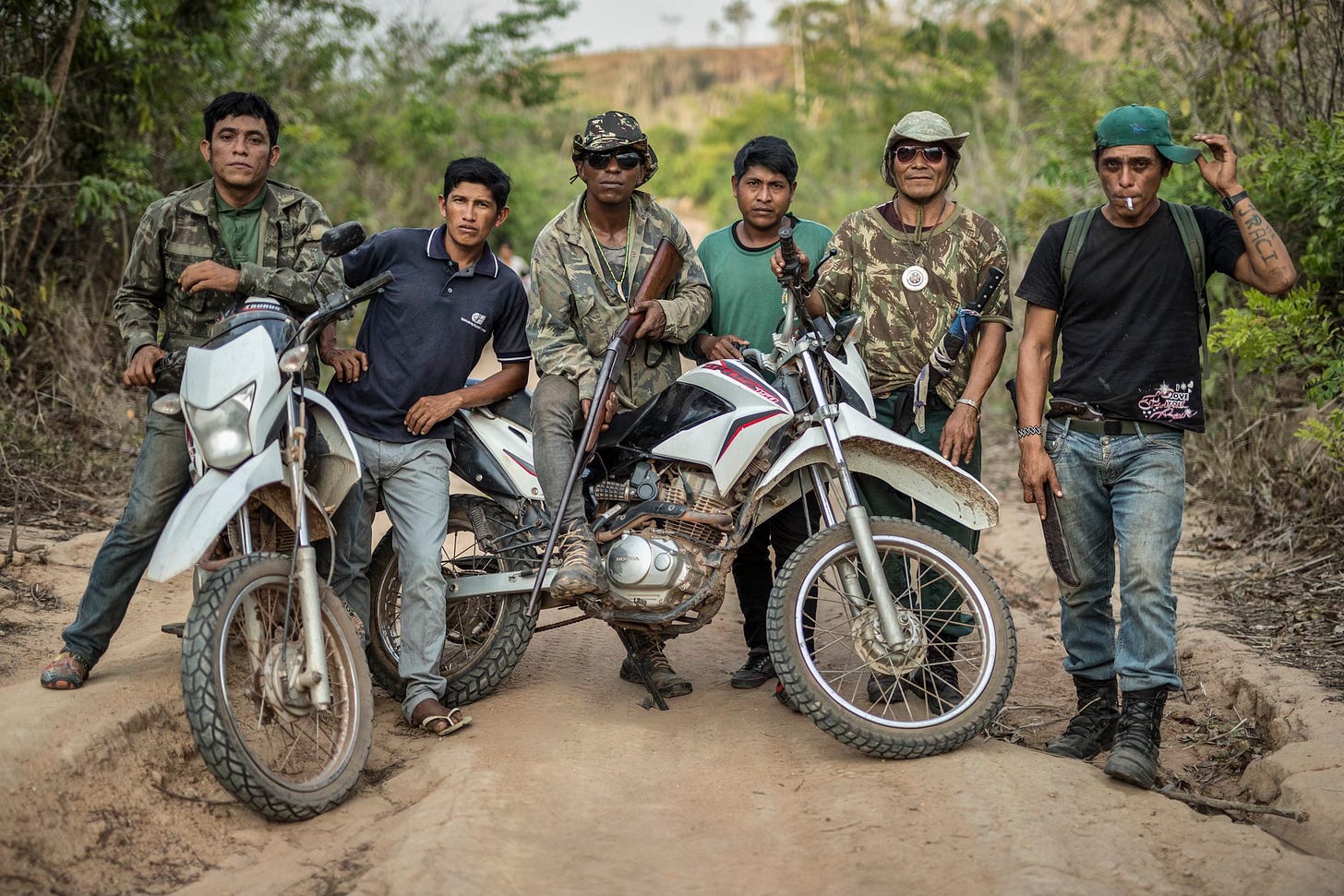
Two years after we left, the Guajajara released footage they’d taken of uncontacted Awá in the forest, no more than a mile from the fire we’d visited. The shot was brief, captured through a tangle of lianas; a young man, perhaps early twenties, with short hair and arms wrapped in vines or reeds, sniffs a machete that has been left out in the forest against the buttress of a fig tree. He’s armed with a bow and arrows, as is another guy next to him, obscured by branches. They spot the camera and vanish into the forest. The footage made global news, as it usually does when isolated tribes are captured on camera, because the notion that people still live in isolation in our fucked-up world is so extraordinary and sensational that we cling on to it with a measure of hope.
I remember the Awá saying to me that they didn’t want to be a tribe that just manages to survive, they wanted to be a tribe that grows. In my ignorance, the idea had never occurred to me, to look for that hope, to see beyond their survival. The Guardians had the same hope, and that’s what kept them fighting. A few months after the footage of the uncontacted Awá was released and the world got all excited, Paulo Paulino Guajajara, aka ‘Lobo Mau’ (‘Bad Wolf’), was shot in the face and killed in an ambush. Laercio took a bullet in the arm and one in the back but managed to escape. A few months later their brother Zezico Guajajara was shot and killed.
The story was published in National Geographic in 2018. It was split between the coverage in eastern Brazil and the borderland regions in Peru. The story was a tense portfolio. The hopelessness of the Guajajara, heightened by the images of fires, the denuded landscapes in the background and their heroic sacrifices for their historic enemy, stood in brutal contrast to the relaxed faces of the Awá, shown bathing in the river and hunting in the shafting light of the forest. The cover featured a portrait of five-year-old Kaiau staring into the camera with a deeply inquisitive expression, his baby black bearded saki monkey perched jauntily on his head in beautiful orange dawn light. It was a powerful shot of connection and innocence, taken with more understanding and deliberation than the one I’d snatched of Yoina and her monkey a few years before. But when I now look at that cover, it’s not with pride. I simply wonder how many of the people we covered during our time in Peru and Brazil have died since it hit the newsstands.
I love this little video of the boys talking about their hunting expedition the previous night.
In the next chapter I head to NYC to photograph filthy rats.




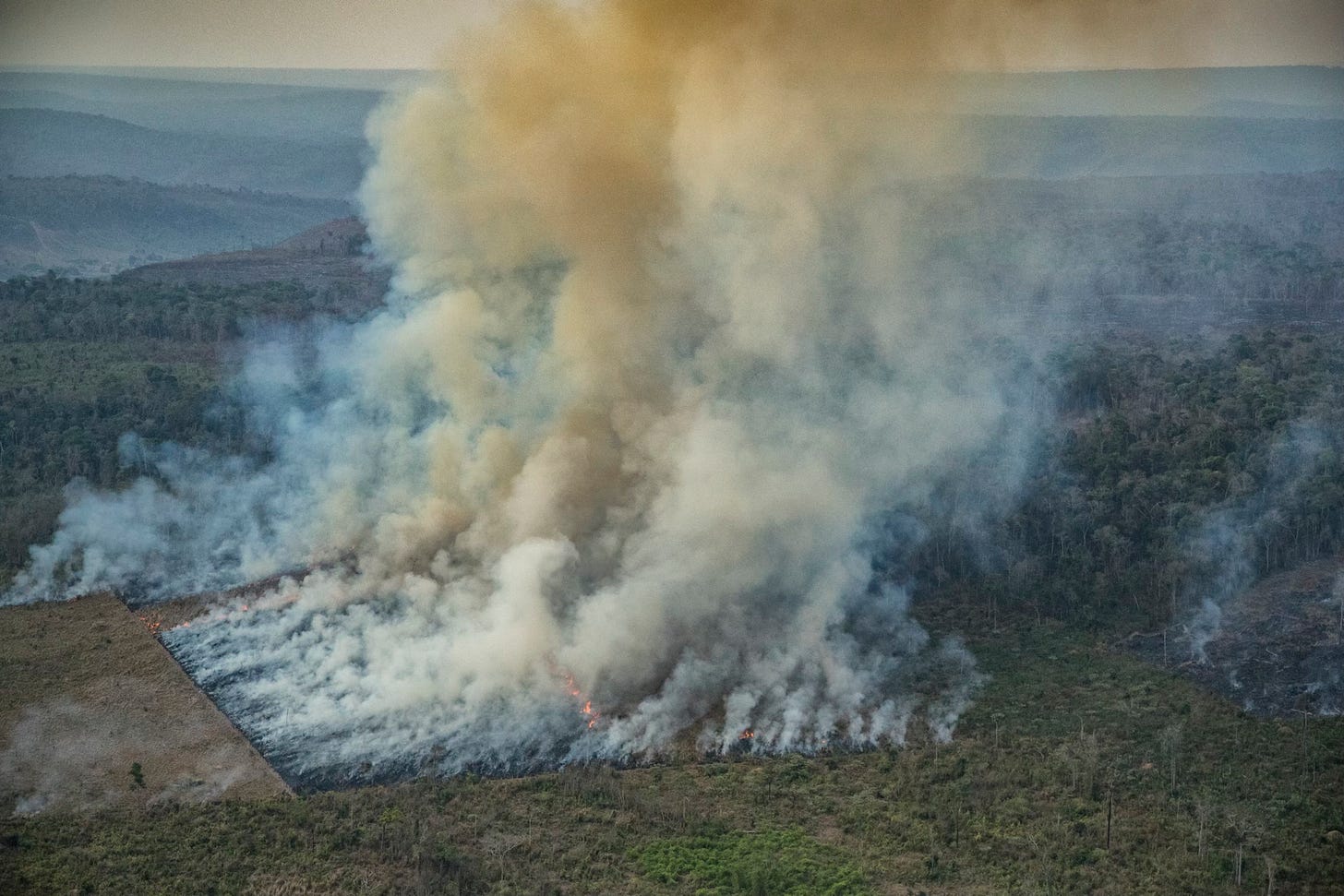

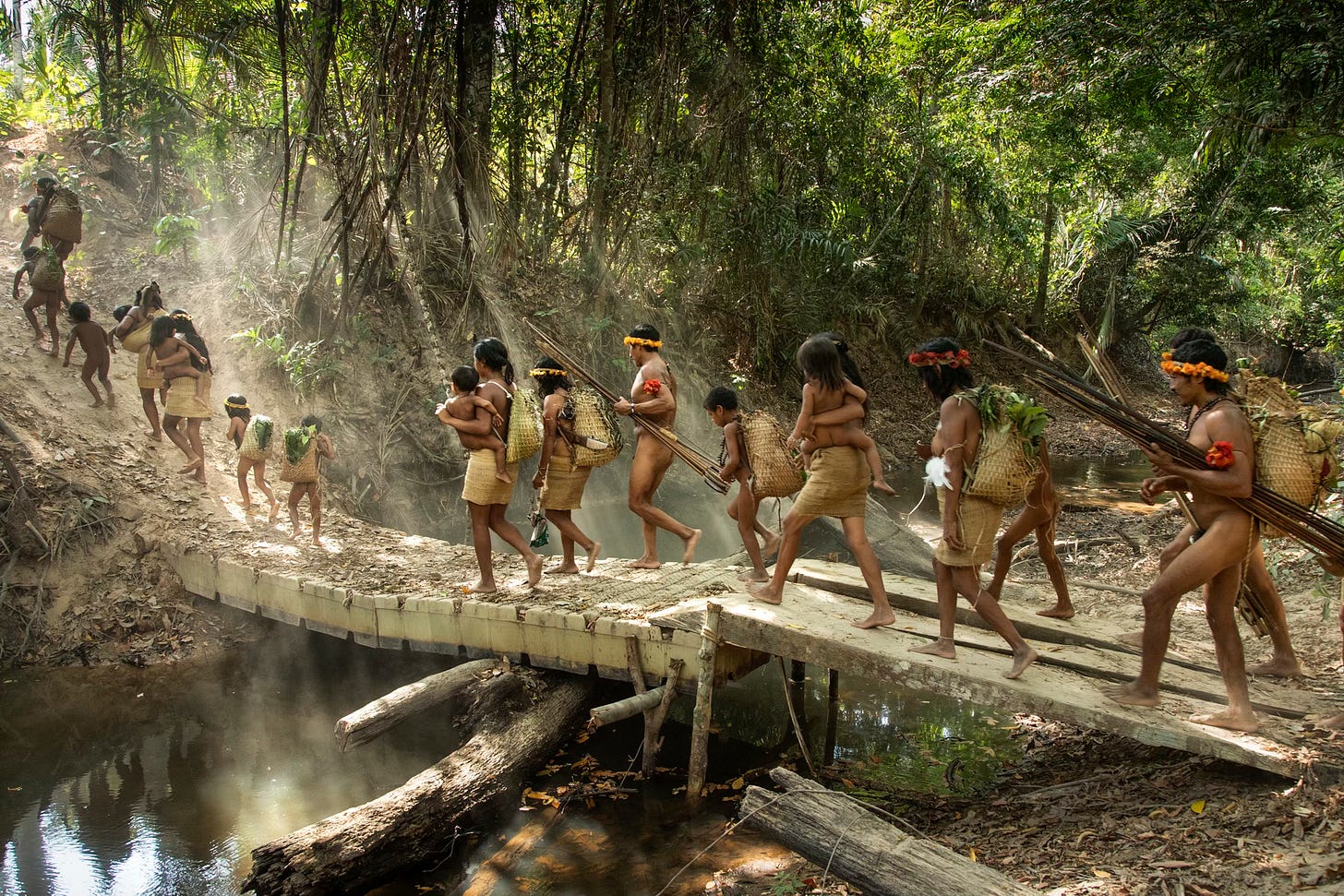

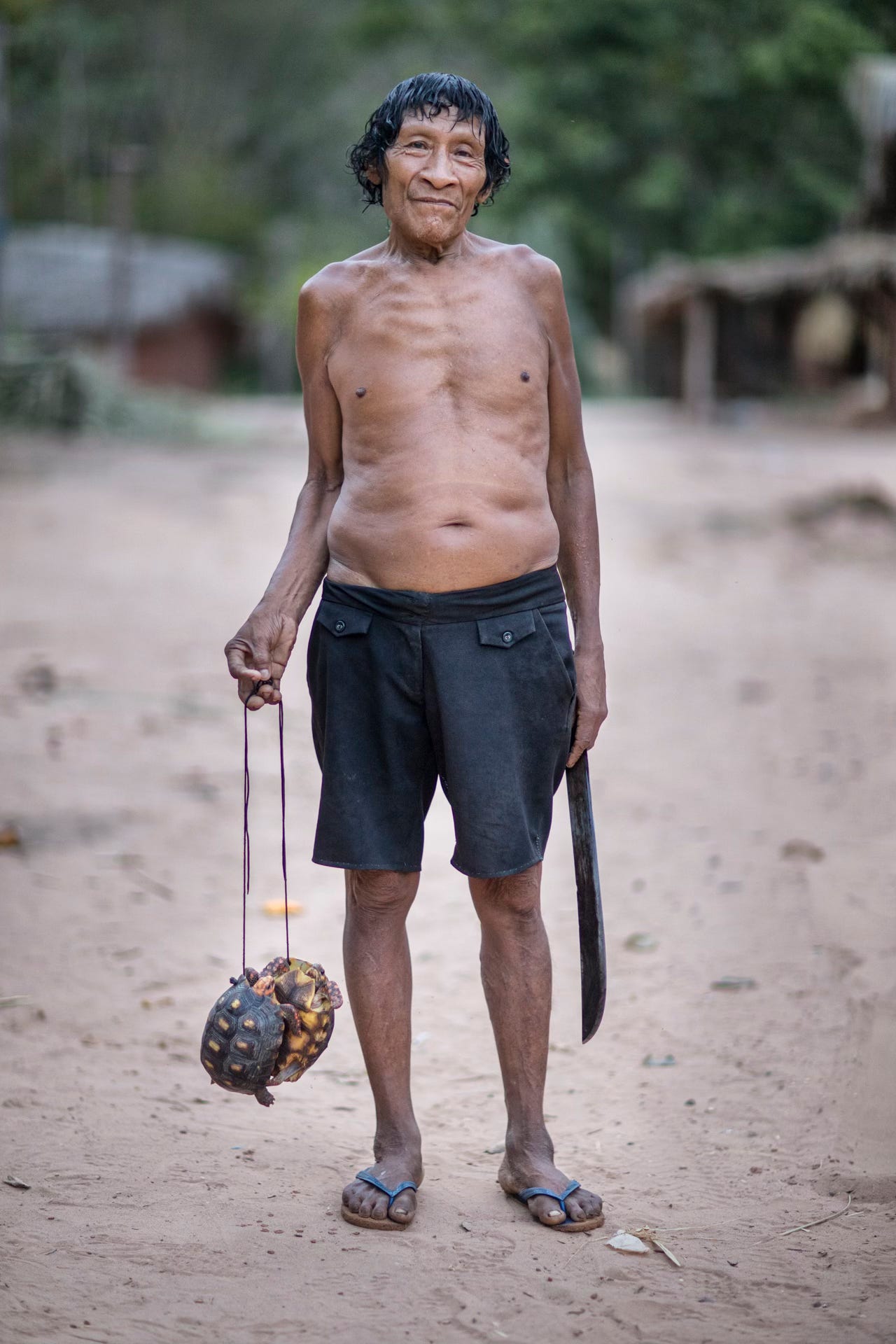
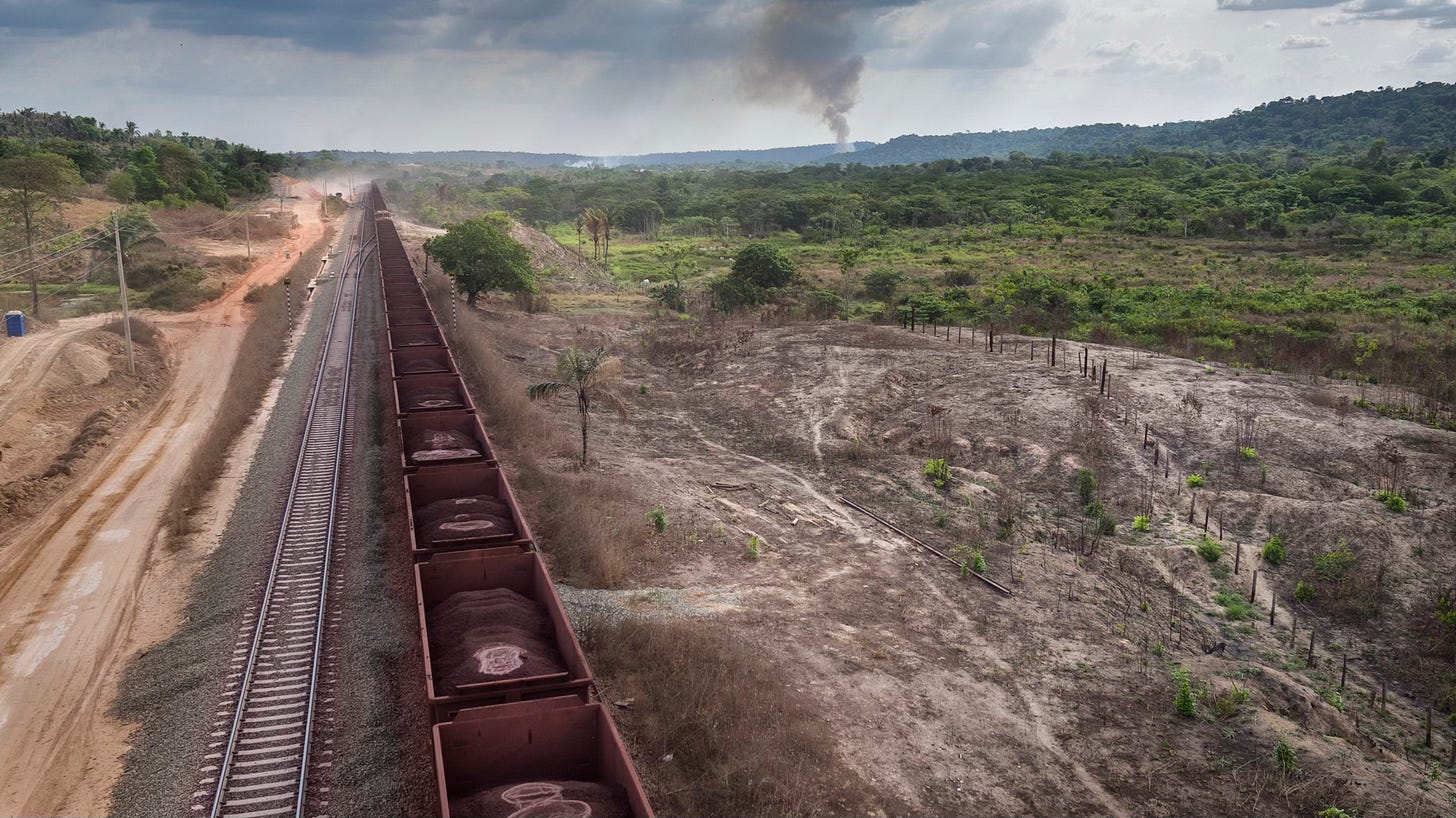

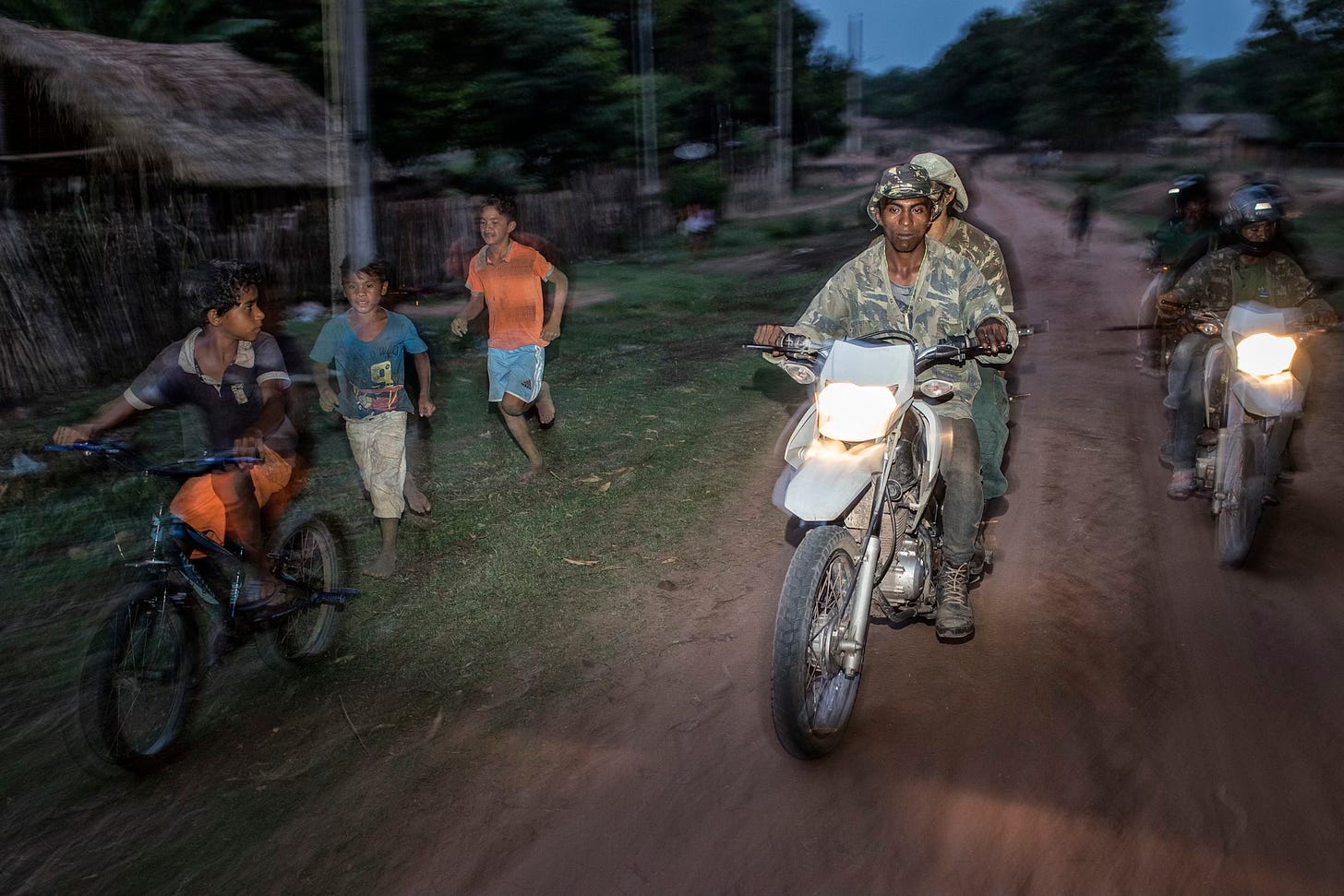

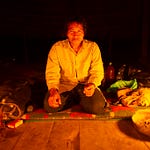

Share this post